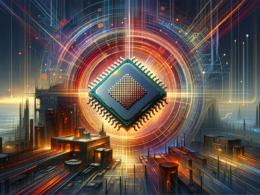In an unexpected twist that’s left tech aficionados buzzing, AMD recently let slip the source code for its upcoming FidelityFX Super Resolution 4 (FSR 4). While it was a blink-and-you-miss-it situation with the code being swiftly taken down, the brief exposure was enough to fuel speculation over the future of AMD’s graphics capabilities. Observers noted potential for broader hardware support, potentially benefitting older graphics cards, and this has set tongues wagging across the tech world.
Zooming In
Background on Upscaling Technologies
Let’s set the stage first. Upscaling tech like AMD’s FSR is the secret sauce that offers high-res visuals without squashing your performance under the weight of processing overload. As a direct competitor to NVIDIA’s DLSS, FSR has gained traction by being more hardware-agnostic, catering to a wider audience. FSR’s previous iterations have already made waves, and now, FSR 4 is tipped to be more inclusive – meaning possibly your older system won’t feel like it’s wearing cement shoes while rendering those crisp graphics.
The Significance of the Leak
The eagle-eyed coders found hints that FSR 4 could support older GPUs, which has serious implications. It might mean AMD aims to optimize its tech for compatibility beyond recent RDNA 4 architecture and RX 9000 series. Notably, hints of INT8 shaders suggest a nod towards backward compatibility, peeking the interest of those still clutching to their trusty, albeit aging, machines.
Industry Reactions and Implications
Discussion boards and tech forums were alight with chatter. Some industrious folks on Reddit and other platforms dove into the codebase, uncovering potential broadened support. This isn’t just a tech flirt – it could be a strategic move from AMD to sustain the lifecycle of existing hardware. Richard Huddy foresees, “The ability to unlock advanced rendering on older gear with FSR 4 syncs with AMD’s inclusive approach. It could really shift the upgrade paradigm for users.”
Comparing AMD’s Strategy with NVIDIA
Now, contrast this with NVIDIA’s pathway, which is a tighter embrace with specific hardware and leans heavily on AI with each shiny new GPU. This highlights AMD’s commitment to casting a wider compatibility net. While FSR 4 is expected to pack machine learning enhancements much like NVIDIA’s offerings, AMD intends to keep doors open for a variety of users, across various systems.
Looking Ahead: Future Developments
AMD’s accidental reveal threw more light on their roadmap than they probably wanted. With official announcements still brewing regarding the Redstone update – rumored to feature Neural Radiance Caching and improved ray regeneration – anticipation runs high. Experts suspect that the lineup of AMD’s next-gen FSR could potentially match or eclipse NVIDIA’s DLSS in universality, given they hit the right notes with those optimizations.
Conclusion
While the slip of FSR 4’s source code might have been a ‘whoops’ moment, it means much for consumers and the competitive pulse of the graphics industry. AMD’s ongoing mission to democratize high-end graphics rendering on diverse hardware could deepen the value of your past investments, offering a premium experience where you least expect it. Keep an eye out – as AMD moves closer towards officially unveiling FSR 4, the anticipation within tech circles grows, setting the stage for exciting developments in graphics technology.









